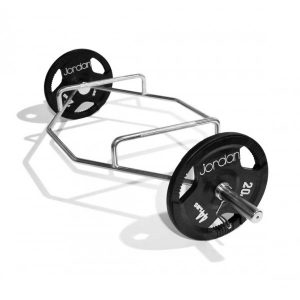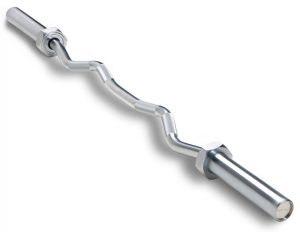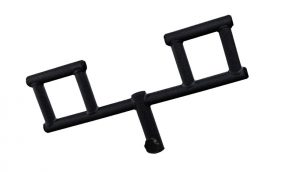3 Specialty Bars Every Gym Should Have, and 3 That Are Awesome To Have
Barbells are fantastic, and something I strongly feel everyone should become somewhat proficient with. There’s hundreds of exercises you could get from them, and variations of each depending on what you’re working towards, but there are times when a straight bar just doesn’t fit with the person you’re working with, or with your own mechanics or injury history, and this is where a specialty bar may be beneficial to you and what you’re goalset may be.
Specialty bars usually have a unique design and solve a specific problem faced with performing an exercise with a straight bar. Occasionally, these specialty bars can be used for multiple exercises in many different ways depending on the creativity of the individual using them, and the reason why they’re being used that way. For instance, a football/swiss bar (depending on what side of the pond you’re on) is a fantastic bar with multiple parallel or slightly angles hand grips to allow for pressing without turning the hands out like you would have to do on a straight bar.
Because there’s a space from the front of the grip to the back of the hand cage, you could also grab onto the outer edge of the bar and use it as a variation of a board press, basically stopping the rep when one side of the hand cage hits your chest while your hand position is about 4-6 inches off the chest, as shown here.
Other bars tend to be limited to their use, but pay massive dividends when their use is warranted. One of the biggest elements for selection into the “must have” pile is whether the bar would be something used by the widest segment of individuals with broad goals, limitations, or reasons to use the bar, whereas the “nice to have” pile was based on stuff that’s cool but wouldn’t necessarily be beneficial to the widest segment of the population, but if you have the disposable income for your own gym or basement of champions you could give them a go.
Let’s go through a few.
3 Bars Every Gym Should Have
#1: Trap Bar

Primarily used for deadlifts, these help reduce hip angle during the movement while increasing knee drive, and help to put the spine into a more vertical alignment, reducing shear force on the spine that many people can’t tolerate well. Many have high as well as low handles, meaning you can get someone who doesn’t have the hip mobility to pull from the floor able to do something slightly more effective for their range of motion. These also work great for farmers carries as well.
Most are relatively inexpensive, usually less than $200, but some beefier models can go for a few hundred more.
#2: Safety Squat Bar

If your shoulders have ever given you a big middle finger after a set of back squats, this might be a solid option for you. The hand grips are out in front with bar padding around the neck and shoulders to make it more comfortable. This hand positioning is significantly easier on the shoulders, and with the weights counterbalanced lower than the shoulder bar, it’s relatively stable on your shoulders, so you don’t have to worry about the bar sliding off. Bonus brownie points for being able to flip these around and rock out some of the worlds most challenging front squats too.
These bars tend to be limited in use to squats and split squats or lunges, but they’re effective if you avoid squats due to tight or painful shoulders. These bars are usually between $300-500, with some beefier models going for close to a thousand.
#3: Football/Swiss Bar
See above. Whether using them for bench press, overhead press, tricep or bicep isolation, the grip makes a big difference over a straight bar. These tend to be pretty cheap as well, but can go up in cost with increasing beefiness. Most are around $150 if you have solid collars, movable ones with bearings would be a bit higher.
3 Bars That Are Awesome to Have
1: Duffalo Bar
The good folks at Kabuki Strength were kind enough to send me a Duffalo bar to play around with, and I’ve been very impressed with it’s versatility, and also how much better my shoulders feel when bench pressing with it. The bend allows for a slightly different wrist angle when grabbing for a bench press, sets the grips lower than where the bar would contact your shoulders on a back squat, and the off-centre weight makes it easier to balance. There’s some attachment points on the Duffalo bar to put a hook for band resisted or assisted set ups as well, so there’s some serious benefits to these bars.
#2: E-Z Curl Bar

Because biceps and triceps are awesome. The bend allows an easier wrist position for folks who can’t fully pronate or supinate their wrists.
If the bar is the same length of an olympic barbell, you could use these very effectively with bent over rows, bench presses, and overhead presses, however most are about 5 feet long, which makes it very hard to get them set up on J-hooks in a squat rack or bench press. The basic models are a pretty cheap investment.
#3: Viking Press landmine attachment

While it’s technically not a bar itself, it’s an attachment to put on the end of a barbell while in a landmine attachment, and from there you can do parallel grip presses, in line presses with space for your head to not get smacked, and a bunch of other fun things.
I don’t have one of these. Yet. However, in the immortal words of Will Farrell playing George W. Bush, “That’s cool as shit and I want that.” Maybe it will be a birthday or Christmas present to myself.
All of these bars aren’t necessary per se, but are used to solve specific problems or provide benefits that can’t be found with a straight bar on its own. You can do a heckin ton of stuff with a straight bar, but every now and then a specialty bar makes a big difference in the quality and risk limitation of a workout.